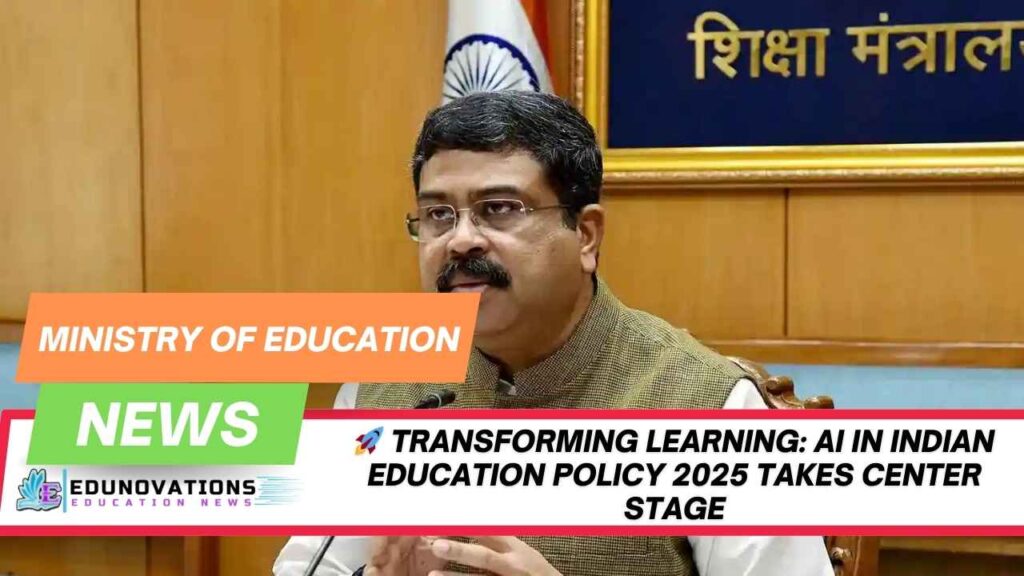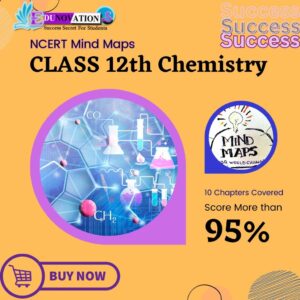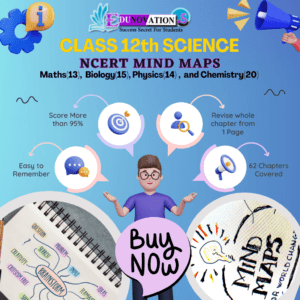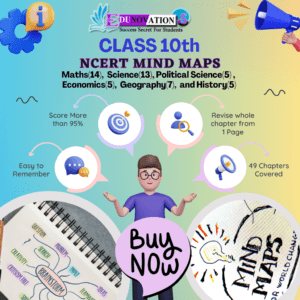Explore how AI in Indian education policy 2025 is driving tech-enabled learning, with insights from PadhAI Conclave led by Dharmendra Pradhan.
Artificial Intelligence (AI) has emerged as the most transformative force in modern education, bridging the gap between empathy and technology. A monumental leap in this direction was seen at the recently concluded PadhAI: Conclave on AI in Education, where policymakers, academicians, technocrats, and visionaries united to discuss the next big shift—AI in Indian education policy 2025.
Union Minister for Education, Shri Dharmendra Pradhan, delivered the valedictory address at the event, emphasizing India’s readiness not only to adopt but also to lead the AI revolution in the educational sector.
PadhAI Conclave: A Turning Point in Policy and Innovation
Organized by the Center of Policy Research and Governance (CPRG) in New Delhi, the two-day conclave served as a hub for idea exchange on AI-driven transformation across Indian education. The event brought together top officials like:
- Shri Jitin Prasada – MoS for Commerce, Industry & IT
- Shri Ashish Sood – Delhi’s Education Minister
- Dr. Vineet Joshi – UGC Chairman
- Shri Abhishek Singh – CEO, IndiaAI Mission
- Prof. Pankaj Arora, NCTE Chairperson
- Prof. Anil Sahasrabudhe, Chairman, National Educational Technology Forum
- Prof. Yogesh Singh – VC, University of Delhi
- Shri Sanjeev Bikhchandani – Co-Founder, Info Edge
The core theme revolved around the active role of AI in Indian education policy 2025, particularly in transforming traditional teaching models, expanding digital reach, and fostering critical thinking.
Why AI in Indian Education Policy 2025 Matters Now
As Shri Dharmendra Pradhan stated, “AI is not just a technology—it is a catalyst for educational innovation.”
Key Highlights from His Speech:
- Establishment of Centres of Excellence in AI to nurture talent and innovation.
- AI integration in Indian languages, promoting inclusive digital access.
- Promotion of critical thinking in schools through AI.
- Emphasis on transition from chalkboards to chipsets, shifting focus to tech-enabled learning.
With such visionary steps, it is clear that AI in Indian education policy 2025 is no longer a futuristic concept—it is already here, shaping curriculums, pedagogy, and outcomes.
Breaking Down the Policy Impacts
Here’s how this forward-looking policy is expected to impact various educational levels:
School Education
- Curriculum Revamp: AI-backed personalized learning modules will replace rote-based study methods.
- Inclusive Learning: Tools in regional languages will bring parity to rural and underprivileged students.
- Smart Classrooms: Enhanced data analytics and content delivery systems will improve teaching efficacy.
Higher Education
- AI-driven research tools and access to international AI labs.
- Integration with global platforms like Coursera and edX for AI-based certifications.
- AI-enhanced administrative systems to track student performance and feedback.
Expert Views from the Conclave
Shri Abhishek Singh, CEO, IndiaAI Mission
“India must develop indigenous AI solutions that are relevant to our classrooms and socio-cultural contexts. AI in Indian education policy 2025 will ensure that.”
Prof. Anil Sahasrabudhe, NETF
“Technology is a partner, not a threat. The goal is to empower, not replace teachers.”
Such viewpoints echo the balanced approach this policy seeks—integrating AI without losing the human touch.
Role of PadhAI Conclave Highlights 2025
The PadhAI conclave highlights 2025 include a range of discussions around:
- Ethics and privacy in AI deployment
- AI curriculum inclusion in B.Ed. and teacher training
- AI for special education, neurodiversity, and accessibility
- Cross-border collaboration for AI research
These insights ensure that AI in Indian education policy 2025 isn’t just a centralized initiative—it encourages grassroots-level innovation and inclusive governance.
How AI Will Reach Every Classroom
One of the key ambitions under AI in Indian education policy 2025 is to ensure that every Indian student, regardless of background, benefits from AI-enabled education. This vision is not confined to urban elite institutions—it is being built for mass implementation across schools and colleges, including those in remote and underserved areas.
To realize this inclusive digital transformation, the government has outlined a multi-pronged implementation strategy:
1. Public-Private Partnerships (PPP) for Scalable Innovation
Under AI in Indian education policy 2025, PPP models are being leveraged to pool technological expertise and financial resources. Tech giants, EdTech startups, and non-profits are being invited to collaborate on scalable AI solutions. These partnerships will play a pivotal role in developing AI-based learning platforms, adaptive learning apps, and teacher-assist tools.
2. Open-Source AI Tools for Mass Adoption
In alignment with India’s Digital Public Infrastructure approach, the policy promotes open-source AI platforms that are customizable, secure, and multilingual. These tools will allow schools to introduce AI concepts without incurring high licensing costs—an essential factor for low-income regions.
3. Affordable Infrastructure Grants for Smart Classrooms
To support the transition from traditional chalk-and-talk methods, AI in Indian education policy 2025 includes provisions for smart classroom infrastructure grants. These grants will fund the installation of projectors, tablets, digital boards, and AI-compatible learning systems in government and aided schools.
4. Training Over 10 Lakh Teachers in AI Fundamentals
Recognizing that teachers are central to any educational transformation, the government aims to train over 1 million educators in basic and advanced AI applications. These training sessions will cover:
- Classroom-friendly AI tools
- Data interpretation for personalized instruction
- Ethics and safe AI practices
- Curriculum integration techniques
As part of this goal, NCERT and UGC are collaboratively developing teacher-training modules and AI-based instructional strategies.
Connecting Tech and Tradition
Shri Dharmendra Pradhan stressed that AI must respect India’s linguistic, cultural, and traditional diversity. The policy promotes development in Bharatiya Bhashas (Indian languages) to ensure accessibility for students from non-English speaking backgrounds.
Through initiatives like AI-based regional content and voice recognition in Indian languages, this will be a significant milestone for AI integration in Indian classrooms 2025.
Toppers Use Mind Maps to score more than 95%
-
NCERT Class 11th Commerce Mind Maps
Add to cartOriginal price was: ₹999.00.₹199.00Current price is: ₹199.00. -
NCERT Class 12th Chemistry Mind Maps
Add to cartOriginal price was: ₹199.00.₹75.00Current price is: ₹75.00. -
NCERT Class 12th Commerce Mind Maps
Add to cartOriginal price was: ₹999.00.₹199.00Current price is: ₹199.00. -
NCERT Class 12th Science Mind Maps
Add to cartOriginal price was: ₹999.00.₹199.00Current price is: ₹199.00. -
NCERT Mind Maps For Class 10th
Add to cartOriginal price was: ₹999.00.₹199.00Current price is: ₹199.00.
Purchase Today
The Road Ahead: Real Outcomes, Real Time
In the next 3 years, India aims to:
- Train 2 million students in AI-based coding and ethics
- Establish 20+ regional AI excellence centers
- Create national AI datasets for curriculum, exams, and governance
- Partner with startups for EdTech innovation
These are not just policy promises—they are part of government AI initiatives in education India, already under implementation.
Supporting Tools & Resources for Students and Teachers
To assist in smooth integration of AI in Indian education policy 2025, students and teachers can utilize trusted educational platforms like:
- 📘 NCERT Courses – Learn foundational subjects with AI-ready modules.
- 📚 Syllabus Guide – Track syllabus updates aligned with AI themes.
- 🧠 MCQs Section – Practice subject-wise AI-related quizzes.
- 📂 Download Free PDFs – Access NCERT textbooks and AI modules.
- 🗺️ Mind Maps – Visual learning aids for better retention of AI concepts.
Through these resources, both learners and educators can stay updated with the national shift toward AI in Indian education policy 2025 and be better prepared for the AI-integrated classrooms of tomorrow.
Need a school website or eLearning system? Contact Mart India Infotech.
FAQs: AI in Indian Education Policy 2025
- What is AI in Indian education policy 2025?
It’s the government’s vision to integrate artificial intelligence in Indian school and college education systems. - Who initiated the PadhAI conclave?
The event was organized by CPRG and attended by top officials, including Shri Dharmendra Pradhan. - What were the PadhAI conclave highlights 2025?
Key topics included ethics in AI, AI in regional languages, and AI for inclusive learning. - What did Dharmendra Pradhan say about AI in education?
He called AI a catalyst for innovation and emphasized India’s potential to lead the AI revolution. - How will AI integration in Indian classrooms 2025 happen?
Through smart classrooms, AI tools in regional languages, and teacher training initiatives. - Is the policy inclusive of rural and non-English students?
Yes, special focus is being given to Bharatiya Bhashas and accessible tech solutions. - What role will UGC and NCERT play in this policy?
They are developing AI-oriented curriculum and learning resources. - What are government AI initiatives in education India?
These include AI excellence centers, teacher training, regional datasets, and EdTech partnerships. - Will AI replace teachers in classrooms?
No. The focus is on empowering teachers with AI tools, not replacing them. - How can students prepare for this shift?
Students can start with NCERT-backed AI courses, use digital platforms, and stay updated via Edunovations.





